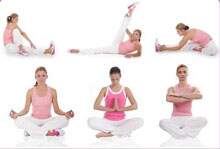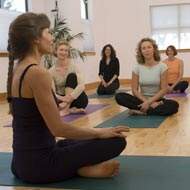- Raja yoga
- Yoga Stretches
- Jivamukti Yoga Poses
- Yoga Tree Pose
- Sun and Moon Yoga
- Wind Removing Pose
- Hare Pose
- Accomplished Pose
- Urdhva Mukha Pinch Mayurasana
- Revolved Abdomen Pose
- Raised Foot Pose
- Scorpion Pose
- Butterfly Pose
- Half Tortoise Pose
- Revolved Twist
- Balancing Stick Pose
- Cat Pose
- Supported Shoulderstand
- Crane Pose
- Handstand
- Happy Baby Pose
- Firefly Pose
- Scale Pose
- Side Plank Pose
- Upward Facing Two-Foot Staff Pose
- Reclining Big Toe Pose
- Revolved Head-to-Knee Pose
- Full Boat Pose
- Upward Extended Feet Pose
- Yoga arm balance poses
- Core Yoga
- Inversion Yoga Poses
- Seated And Twist Yoga
- Horse Pose
- Cobbler Pose
- Seated Wide Angle Pose
- The Compass Pose
- Half Crow Pose
- Bound Half Moon Pose
- Lotus Pose
- Reverse Warrior Pose
- Fixed Firm Pose
- Back-bend Poses
- Forward bend Poses
- Sarvangasana
- Ashtanga Yoga Poses
- Warm up poses
- Seated Poses
- Seated Forward Bends
- Chair Poses
- Standing Poses
- Standing Balancing poses
- Yoga Asanas
- Hatha Yoga Asanas
- Yoga Postures Online
- Partner Yoga Poses
- Anusara Yoga Poses
- Advanced Yoga poses
- Restorative Yoga Poses
- Kids Yoga Poses
- Beginning Yoga Postures
Stick Pose (Urdhavadandasana)
The urdhvadandasana or the stick pose is also known as the upward staff pose. It is a variation of the staff pose or dandasana and takes the pose to the next level of difficulty.
This pose also builds up to the head stand or shirsasana. This pose is also called the balancing stick pose.
Steps:
The Urdhavadandasana belongs to the intermediate level of yoga and therefore care needs to be taken when performing the pose:
- You would first need to begin with the Shirshasana or the Head Stand pose. This too is a difficult pose and beginners would need a trainer to guide them into the pose.
- Once you are in this pose, slowly lower your legs in a horizontal position and allow your hips to move slightly back. Keep your legs parallel to the ground.
- Stay in this position for the next 30 seconds and continue to breathe slowly.
- When in this position make sure that your wrist and forearms are on the ground supporting your head.
- Slowly release the pose and bring your legs down and assume the child pose to relax your head.
Precautions:
There are certain points that you need to look into before you actually perform this pose. This is because if essential precaution is not taken, you could be exposed to some serious injuries. Following are the essential precautions you need to take and be aware of before you go ahead and perform the pose.
- If you have any injuries of the spine, neck, hips or the lower back this is a pose you should completely avoid.
- If you suffer from high blood pressure or hypertension, this pose is not a good idea.
- Pregnant women should never consider performing the pose at all as it could prove dangerous for both the mother as well as the child.
- If you are a beginner make sure you have your trainer to guide you at least in the initial stages until you feel comfortable doing the pose on your own.
Beginner’s Tip:
This pose can be done using the wall for support when you are just beginning to do the pose. Achieving balance can take some time so using the wall can help.
Remember to keep the pelvis as the center of gravity. You could also make use of certain yoga props like a yoga mat or yoga blanket to support your head.
Benefit to Body Part:
- This pose, an intermediate level pose, is great to develop inner body strength and core muscle strength.
- It helps to strengthen the legs, ankles, calves, thighs, shoulders and arms.
- The pose even helps stretch the spine along with opening the pelvic joint.
- It broadens the collar bone and balances the weight of the body equally.
Therapeutic Applications:
- Urdhvadandasana helps to improve the concentration level of the person as also improve memory power.
- It can improve blood flow throughout the body. This also helps to improve the skin tone of the person.
- It loosens the pelvic joint and helps deal with issues regarding chronic hip pain.
Variations:
- The variation to this pose is using the wall as support. The wall can help balance your legs and keep them straight.
Preparatory Poses:
The Urdhvadandasana or the stick pose acts as a preparatory pose for many complicated headstands. Shirshasana is a preparatory pose for Urdhvadandasana as well as a follow up pose. This pose is sometimes even considered a variation of shirshasana.
Follow up Poses:
- Head Stand (Shirshasana)
- Child Pose (Balasana)
 Find Pose
Find Pose

